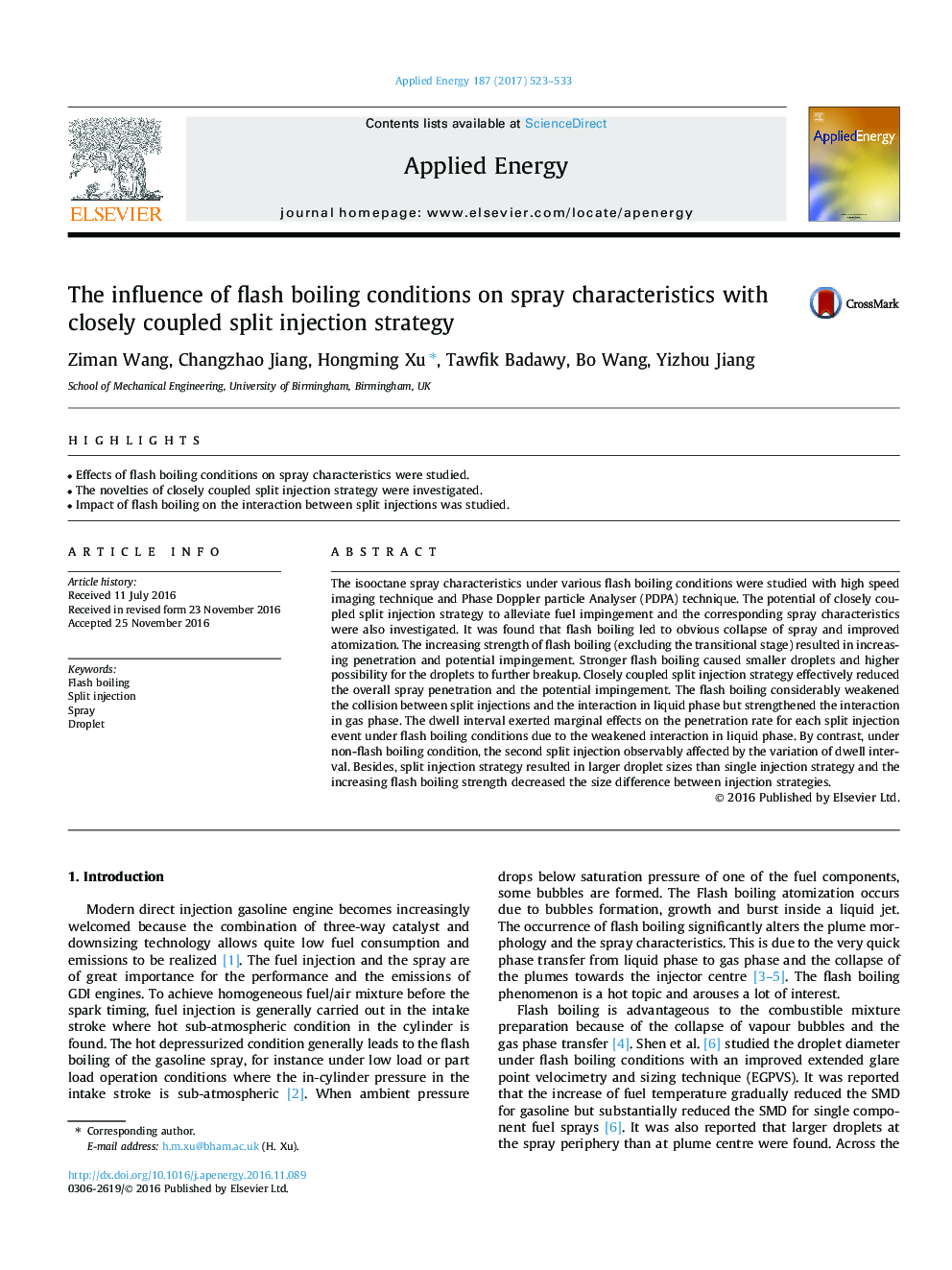| Article ID | Journal | Published Year | Pages | File Type |
|---|---|---|---|---|
| 4916697 | Applied Energy | 2017 | 11 Pages |
Abstract
The isooctane spray characteristics under various flash boiling conditions were studied with high speed imaging technique and Phase Doppler particle Analyser (PDPA) technique. The potential of closely coupled split injection strategy to alleviate fuel impingement and the corresponding spray characteristics were also investigated. It was found that flash boiling led to obvious collapse of spray and improved atomization. The increasing strength of flash boiling (excluding the transitional stage) resulted in increasing penetration and potential impingement. Stronger flash boiling caused smaller droplets and higher possibility for the droplets to further breakup. Closely coupled split injection strategy effectively reduced the overall spray penetration and the potential impingement. The flash boiling considerably weakened the collision between split injections and the interaction in liquid phase but strengthened the interaction in gas phase. The dwell interval exerted marginal effects on the penetration rate for each split injection event under flash boiling conditions due to the weakened interaction in liquid phase. By contrast, under non-flash boiling condition, the second split injection observably affected by the variation of dwell interval. Besides, split injection strategy resulted in larger droplet sizes than single injection strategy and the increasing flash boiling strength decreased the size difference between injection strategies.
Related Topics
Physical Sciences and Engineering
Energy
Energy Engineering and Power Technology
Authors
Ziman Wang, Changzhao Jiang, Hongming Xu, Tawfik Badawy, Bo Wang, Yizhou Jiang,
